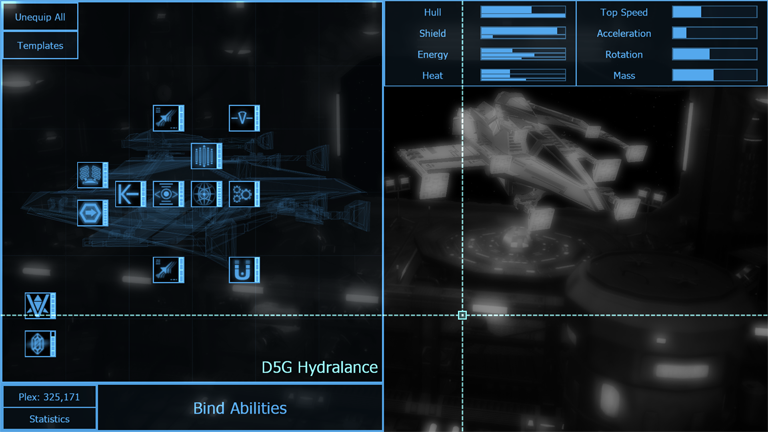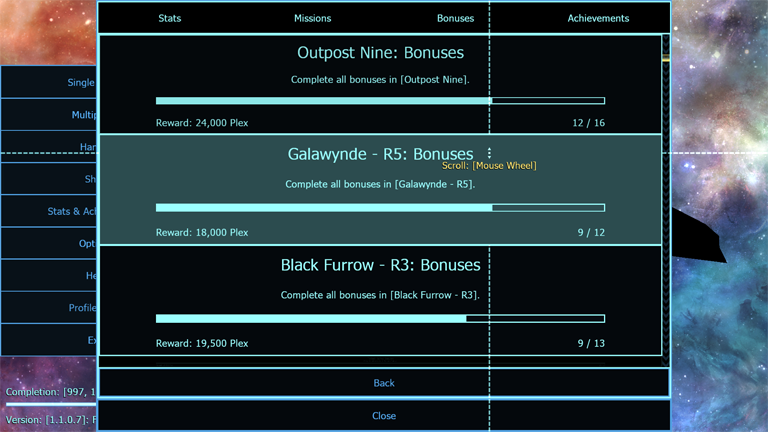Okay, so that's more assumption than fact: as mediums aren't real and zombies ain't that articulate, I don't actually know whether Erwin Rudolf Josef Alexander Schrödinger would approve of games in general (or Ring Runner: Flight of the Sages in particular), but – come on: when you're known for one particular thing (like, say, a cat sharing two states of being at once), surely you'd give something with the same existential dichotomy a nod... Especially if, once unboxed, the thing in question retained both states?
Because that's what we're talking about here: Ring Runner is one of those rare games that, on the one hand, is exactly what you'd expect of a shooter; and, on the other, so much more than you could hope for.

Made by Triple.B.Titles, a Texas-based indie studio of two brothers and a wife, the game casts you as an amnesiac pilot who wakes up to blaring alarms with an extra voice in your head (that of Nero: your integrally-inseparable companion). You escape an exploding facility, only to get stranded in space without a ship of your own, and from those humble beginnings are drawn into about 30 hours of escalating story, which eventually sees you challenge forces intent of reshaping the world.
In terms of presentation, the game is pleasing to look at, if slightly limited by its monochrome-ish palette and overt focus on neon colors. But the effects are spot-on, the soft synth music — quite nice — and the writing and world-building rock-solid (as befitting, perhaps, the game being based on a novel). In terms of backstory, narrative and exposition, Ring Runner plays more like an RPG than a shooter, with frequent (witty) dialogue, a logical progression of events and a cast of characters that, while not exactly remarkable, feel like they belong to the world you are presented with.

But it is, in fact, shooting – not talking – that's the core focus of the game and it is handled in a way much more advanced than you'd expect.
Far from being simple colorful sprites, each of the 65 (!) ships available has mass, thrust and unique, customizable abilities that set it apart it from the rest. The flight model also obeys proper, newtonian physics, so while a hulking bomber might be able to take a beating, it'll handle like a barn and take forever to accelerate or brake; while a little interceptor prone to explode if you look at it wrong will be able to fly effortless circles around it.
The impressive roster of vessels is split into six classes, each with its own pros and cons.

Rogues depend on cloaking, sniping and ambushes to make their mark; Arsenals are flying bunkers, slow but with a high defense and firepower; Casters offer a decent balance between area of effect attacks and good mobility (with the added bonus of space-magic, like teleportation); Fighters are zippy and pack a wallop, but are frail; Grapplers like it up close and personal, with weapons that can pummel an opponent or throw them into a wall at breakneck speed; and the massive Duos are meant to be played in co-op (with one player steering the ship, while the other mans a 360 degree turret), but (as this pig can attest) can also happily be employed solo to devastating effect.
Each ship hull must be purchased and contains "nodes" for every subsystem (such as engines, hull, shields or weapons) which can customized to suit your play-style. As the game offers something like 300 (!) components to choose from, the system is extensive enough it wouldn't feel out of place in Armored Core (fair warning to build-obsessive players: if you let it, Ring Runner will eat up hours of your time as you try to attain the unicorn of an Ideal Build).
To expand your roster of ship hulls or components, you need to earn credits. In Ring Runner, this is accomplished by completing missions, fulfilling achievements (which pay cash bonuses on completion and, for a change, Serve a Purpose); or simply waiting a real-life day (until Paid Research is completed and nets you a fixed amount of credits).

While the ship customization and researching new node equipment is quite fun, I can't say I was fond of the whole "wait 24 hours for credits" scheme. While I can sorta understand the logic (by meting out in-game rewards on a real-life schedule, you ensure people will play longer); forcing players to wait for rewards is simply poor design (though the more astute readers will immediately spot the Easy Exploit to be had in a system based on the computer's clock).
That aside, though, the game is competently put together. The plot, while not that original, is quite fun, with missions that continually pit you against unique scenarios. So while the majority of your play time will be spent shooting and trying not to die, you will also be taking part in races, settling space-duels (as in "fly ten paces, turn and shoot"); escorting bigger vessels, battling rowdy scows (that's "space cows" to you ground-lubbers) and enjoying quite a lot of clever dialogue. It's not everyday that I get to recommend a shooter for its plot, but Ring Runner's rich exposition makes for an easy sell.

On top of the extensive mission roster, the game also offers mini-games (in the "Subrostrum Arcade") and four co-op modes (Base Battle, Wave Survival, Gladiator Mode and Deathmatch) for a fairly exhaustive experience. When paired with the extensive ship customization, it makes for much more robust gaming than one might expect from such a small production and seemingly simple concept.
If you're in the market for your next shooter, are yearning for a compelling story or simply want to bask in the presence of a small gem with a lot of sparkle, consider giving Ring Runner a try.
As for Schrödinger: while we may never know what his opinion of the game would have been, now that he's in a box of his own, I like to think that both possibilities are equally likely.
